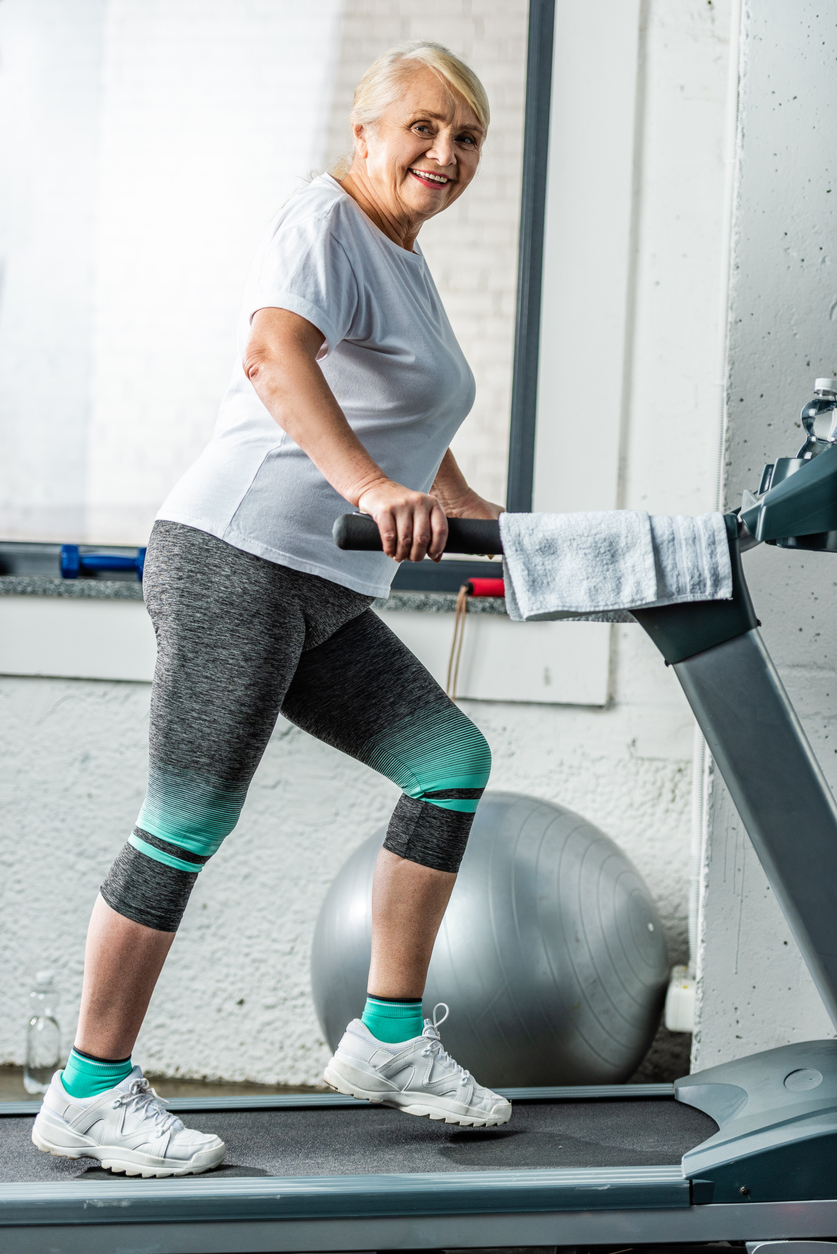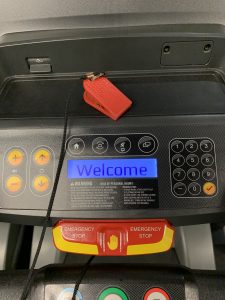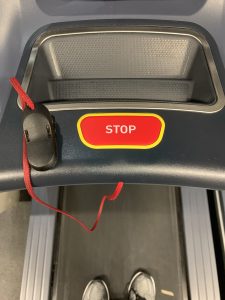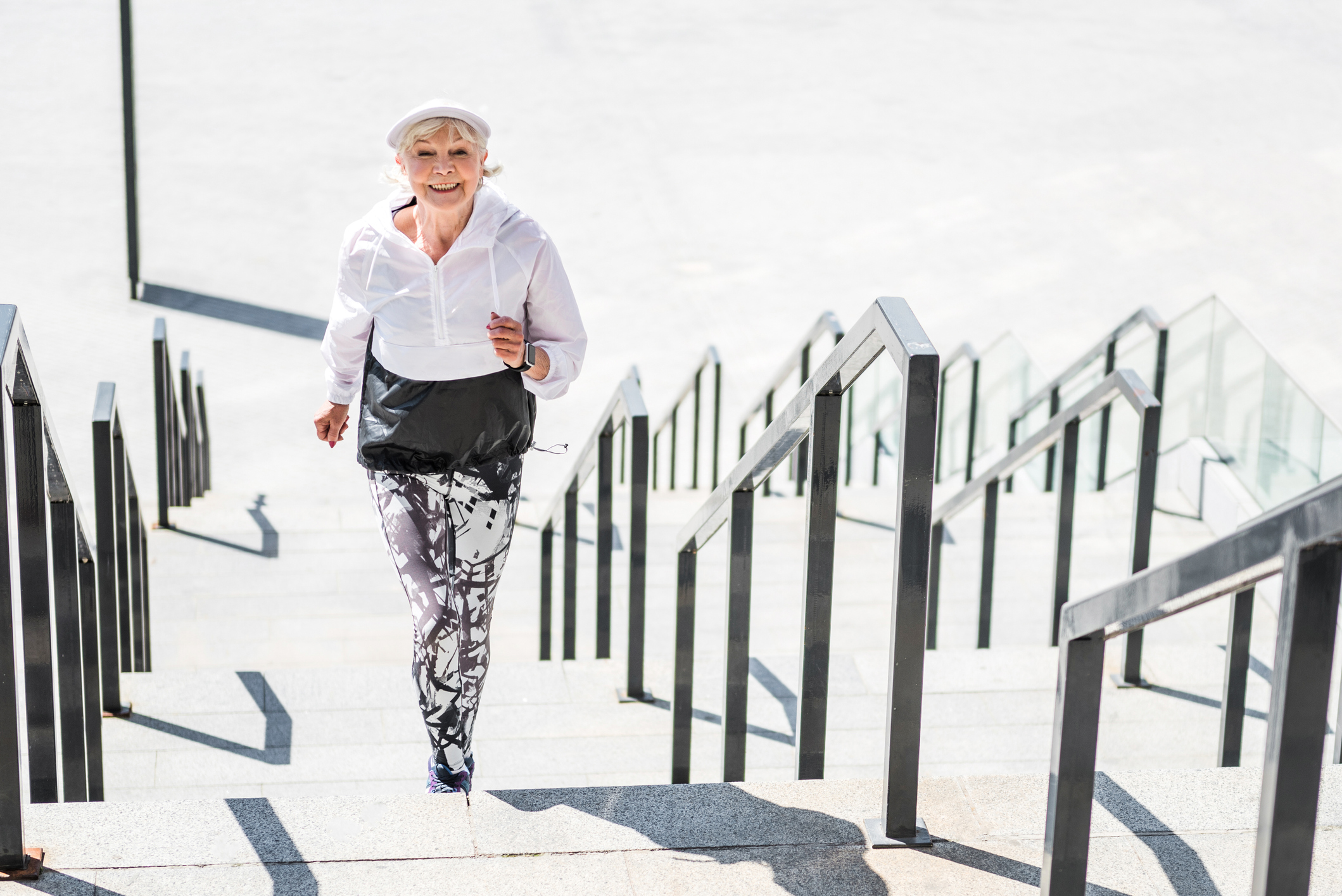
TREADMILLS & SENIORS: THE RULES OF ENGAGEMENT
Treadmills (TM) are one of the most popular but dangerous exercise tools. TM cause the most overall injuries – and serious injuries – of any exercise modality and are one of the few modes of exercise that can actually get you killed (along with bicycles) if you do something careless or have bad luck (1, 2, 3). This combination of popularity, high over-all and serious injuries and the potential for deadly accidents makes knowing what you’re doing on a TM a vitally important consideration for exercising adults of all ages, but especially for seniors.
Since I work with seniors, I’m curious about what they do on their own in the gym, so I always keep an eye out. To me, the way many seniors use TM really stands out for an abundance of unsafe, body-disrespecting and time-wasting strategies, so I generally don’t recommend TM use for most seniors.
It’s important not to incur needless risk when trying to improve your fitness, so an accurate TM risk/benefit assessment is very important. The information which follows will help you determine if TM use is right for you; and if you do choose to use a TM, it might also help contribute to a safe, productive and body-respecting TM exercise session.
TREADMILL RULE #1
If you need to hold on to the front/sides of a TM to walk, you don’t belong on a TM, period.
Some people (I would think especially men) might have a tendency to dismiss this recommendation, but it’s more important than anything else I have to say about TM use & seniors – and that’s why it’s RULE #1. Heeding this rule will help allow you to move ahead with your fitness training in a positive way without getting sidetracked into ineffective, unsafe and un-functional TM training.
I’d rather you walk 10 steps-at-a-time for 5 minutes over ground, than 60 continuous minutes holding on to a TM – you’ll get more out of it – and it’s safer and much more functional for your body.
TREADMILL RULE #2
Please re-read rule #1 as many times as it takes to accept/sink in and implement.
TREADMILL RULE #3
Holding on with both hands to the front or sides of the TM for anything other than a moment or two is profoundly anti-fitness and anti-function and should never be done.
What I mean by “anti-fitness and anti-function” is this: If you hold on, you are creating a stimulus to decrease your fitness and functional ability and increase your risk of chronic injury. In other words, holding on for a TM exercise session is much worse than just a time waster – you’re actually devolving as a functional human being and de-training yourself into a lower level of fitness and functional ability.
See the last section below – WHY HOLDING ON TO THE TM IS A FITNESS ABSURDITY – for a more detailed discussion.
TREADMILL RULE #4
An essential senior safety procedure is to always place one hand on the front handles or handrail when your attention to walking is potentially compromised.
Many TM accidents happen when a senior’s attention to walking straight is compromised or divided by an additional activity. What often happens in this situation is the person drifts laterally and one foot goes partially off the side of the moving TM belt.
Examples of situations that might compromise your attention to the task at hand – walking straight in the middle of the TM belt – include : a) when using the control panel; b) when reaching for your water bottle; c) when reaching for your towel or toweling off; d) when adjusting the placement of your ear buds; e) when looking at or operating a phone or other electronic device; f) when someone engages you in conversation; g) when something drops or falls, like a towel, phone, keys or water bottle.
So be consistent in following this rule as it could save your life!
TREADMILL RULE #5
Prepare for TM walking by always double-tying your shoes.
This rule might seem like common sense to many – I double-tie even my dress shoes – but I’m amazed at how few of my own clients double-tie their shoes before exercising. I think we can agree that walking on the TM is one of the last places we might want our shoe to come randomly untied and trip us up.
TREADMILL RULE #6
Stay particularly vigilant about staying to the very front of the TM belt surface.
Drifting back can put you in danger quickly as any decrease in your walking speed (relative to the TM belt speed) can swiftly send you tumbling off the back of the TM. I recommend staying no more than a foot from the front of the TM – your swinging forearms should almost touch the front surface of the TM.
TREADMILL RULE #7
For seniors, the car driving slogan “speed kills” also applies to TM belt speed, as your risk of an abrupt accident increases exponentially the faster the TM belt moves.
You should utilize a walking speed that leaves you more than comfortable and then use the grade/elevation* function to add additional fitness challenge. For seniors, the grade/elevation function is your fitness development best friend and the speed function is the evil twin.
Using the grade function is not just a safety strategy; it’s also the most effective fitness development strategy. Walking on a TM is not the same fitness stimulus as walking over ground. If you walk on a TM at your personal preferred speed, it is less physically intense than your personal preferred speed done over ground. This is because studies show that people choose to walk slower on a TM compared to over ground and also change their walking mechanics by shortening their stride length and prolonging their stance (foot is on the ground) phase of the walking cycle.
In other words, walking on a flat TM surface is less fitness stimulating compared to walking on flat ground**. You could try to walk faster than you are comfortable, but for seniors this strategy doesn’t have a favorable risk/benefit – the faster the TM belt is moving the more potential danger you are in – and really you can only walk so fast anyway.
So the safest and most straight-forward strategy is to use your TM best friend and add incline for added fitness challenge – it allows for safer and relatively unlimited increases in physical challenge.
TREADMILL RULE #8
For seniors, “warming up and cooling down***” in a gradual fashion is actually more important on a TM than many other “cardio” activities.
A gradual TM warm up and cool down is so important because it doesn’t just help your muscles and cardiovascular system function optimally, it also helps to prevent accidents/falls as a neurosensory warm-up/cool-down.
A TM poses a somewhat unique neurosensory situation: Our limbs are moving, we need to balance and walk and propel ourselves forward, but we’re standing still relative to our environment, so our body senses movement and stillness simultaneously. It’s possible this sensory conflict is at the heart of why we walk slower on a TM than over ground, so I think a neurosensory “warm up and cool down” is an important consideration, particularly with regards to the speed of the TM bed/belt. Start at a very slow speed and build up over minutes, not seconds.
The cool down is important to prevent getting dizzy or light-headed when the TM bed stops. Dizziness or light-headedness can happen from the neurosensory conflict or a possible lack of blood flow to the brain because the sudden absence of the leg muscle action of walking decreases the venous return of blood back to the heart. When finishing your TM session, slow the speed first and then gradually lower the grade over at least 2-3 minutes – and then when the TM belt stops be sure to hold on to the rails until you are sure you’re not dizzy. Finally, be extra cautious stepping down to the floor from the TM.
TREADMILL RULE #8
Seriously consider using the emergency stop clip.


Nearly every TM has some form of an emergency stop clip (like the ones in the photos left and right) which automatically stops the treadmill if the tether line is pulled taut. Interestingly I have literally never seen anyone use TM stop clips in 40+ years of hanging out in gyms (no exaggeration). Is it ignorance, arrogance, pride or a false sense of security that prevents us from using emergency stop clips? A TM accident can ruin your day or worse, so seniors should seriously consider using this simple, easy safety feature which is readily available to them.
There are also products like Connect Me Tight which are designed to be used in conjunction with the safety stop clip, but I’ve never seen these products in use so can’t comment on their effectiveness. Also, they may prevent a complete fall and ejection off the end of the TM, but won’t prevent a face-plant on the front console or severe impact with the side of TM should you lose your footing. It also looks like one could abuse the product by leaning back against it, which would not be helpful.
WHY HOLDING ON TO THE TREADMILL IS A FITNESS ABSURDITY
1) First & foremost, holding on shuts off your core****. The core’s main function is to stabilize the shoulder blades, spine and pelvis/hips. Decreasing core activity/responsiveness is the opposite of optimal physical function and creates mal-alignment, extra motion and micro-trauma (wear & tear) – particularly to your spine, pelvis, hips and knees.
2) When you hold on, you eliminate the natural counter-rotation arm swing that we evolved to use for healthy and efficient bipedal motion. Try this observational exercise: have a friend first walk on the TM without holding on and note the amount of pelvic/hip motion; then ask them to hold on and note the substantial increase in pelvic/hip motion. Now consider that the spine is attached to the pelvis, so although harder to observe, the spine also has a marked increase in motion when holding on. The take home: this extra motion while holding on to TM is the opposite of being “stabilized” in optimal alignment and creates more stress and micro-trauma to spine, pelvis, hips, knees and ankles/feet.
3) Holding on creates terrible posture and upper body alignment and reduces the core muscle activation needed to combat poor posture. Watch someone holding on and chances are you will see some combination of head down, shoulders forward and upper spine bent forward – the opposite of what optimal upper body alignment and posture should be. This bent forward position is what gravity is already doing to us every day, so fitness activities should be trying to create the body tools to combat this gravity-induced bent forward effect rather than enhancing it.
4) Of course holding on markedly reduces work done (calorie burn) and intensity at any given speed or grade.
5) Holding on to the front handles of a TM while adding increased grade/incline reduces TM walking to the ultimate absurdity: An anti-functional activity with maximum mortal risk and minimal (if any) fitness effect. TM walking with grade/incline while holding on creates a critically unsafe position because the body is not leaning forward over your feet in natural balance with the force of gravity. When walking on a flat surface your body is more or less perpendicular to the walking surface since natural balance dictates that the body’s center of gravity (COG) be positioned over the body’s base of support (BOS). With hands-free TM walking, as incline is added, the body leans forward relative to the TM surface to stay in natural balance. In contrast, if you hold on to the front of the TM and add incline, your body stays perpendicular to the TM surface, which is not in hands-free balance since the COG is outside the BOS. In this precarious position the only thing to prevent you from falling is your hand grip – this means if your hand ever slips you will surely fall backward and off the TM. To add further absurdity to this mortal risk-inducing strategy, you also effectively cancel out any physical challenge an incline might add, since your body is positioned (and does the same amount of work) as if walking on a flat surface.
6) I’m not alone in calling for TM holding on to stop: see here and here for what others have to say on this topic.
*To effectively and safely use increasing levels of TM grade/elevation, you need a certain level of “ankle dorsiflexion” (ADF) and toe extension – more than walking on a flat surface. ADF is the functional ability to move your shin bone closer to the top of your foot. Toe extension means your toes are OK bending back toward the top of your foot. If you have problems with either, you need to get them corrected before using TM grade/elevation.
**The most commonly talked about strategy to mitigate this effect is to put 1% grade on the TM at any given speed to equal the effort expended at the same speed moving over ground. However, this strategy is based on a 1996 study done with running, so I’m not sure we can extrapolate to TM walking; so walk slow and add as much grade as you can tolerate for the safest and best fitness development strategy.
***Warming up is gradually increasing the intensity of any given activity to prepare for peak working level intensity; cooling down is the opposite done at the end of a given workout to transition from peak work level intensity to rest/non-activity.
****Anatomically, the core is everything from the shoulder blades down to the hips/pelvis. Functionally, the reactive core is responsible for stabilizing our body, particularly our spines. Read here, here and here for my previous posts that relate to the core.



